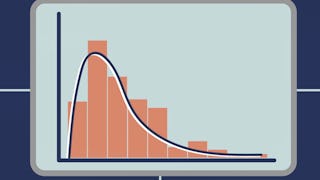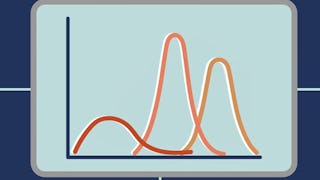By the end of this course, learners will be able to apply Bayesian statistics for decision-making in both business and healthcare contexts, implement probabilistic models in Excel, and perform advanced A/B and multi-variant testing using Python.



Bayesian Statistics: Excel to Python A/B Testing

Instructor: EDUCBA
Access provided by Datta Meghe Institute of Higher Education & Research (DU)
What you'll learn
Apply Bayesian reasoning in Excel to calculate, update, and interpret probabilities.
Build probabilistic models and analyze predictive performance in real datasets.
Use Python with MCMC and PyMC for A/B testing, posterior inference, and scaling.
Skills you'll gain
Details to know

Add to your LinkedIn profile
10 assignments
September 2025
See how employees at top companies are mastering in-demand skills

There are 3 modules in this course
This module introduces the core principles of Bayesian statistics and demonstrates their application in supervised machine learning and A/B testing. Learners will explore the fundamentals of Bayesian inference, examine practical examples of decision-making under uncertainty, and gain hands-on experience implementing Markov Chain Monte Carlo (MCMC) methods using PyMC. By the end of the module, participants will develop the ability to connect Bayesian theory with real-world machine learning experiments.
What's included
8 videos4 assignments1 plugin
This module introduces learners to the fundamentals of preparing healthcare datasets for Bayesian statistical modeling using Microsoft Excel. Learners will explore project goals, understand the structure of real-world healthcare testing data, and create efficient summaries for initial analysis. By examining historical, future, demographic, and center-based trends, students will gain the ability to organize, interpret, and structure data effectively, ensuring a strong foundation for Bayesian probability applications in healthcare analytics.
What's included
7 videos3 assignments
This module guides learners through constructing and applying Bayesian probability tables in Microsoft Excel to analyze healthcare testing scenarios. Students will learn how to structure Bayesian frameworks, calculate joint probabilities, update prior probabilities with new evidence, and interpret outcomes across multiple testing cycles. By the end of this module, learners will be able to apply Bayesian reasoning to real-world healthcare data, enhancing accuracy in predictive healthcare analytics.
What's included
4 videos3 assignments
Why people choose Coursera for their career




Explore more from Data Science

University of California, Santa Cruz

University of California, Santa Cruz

Tufts University


